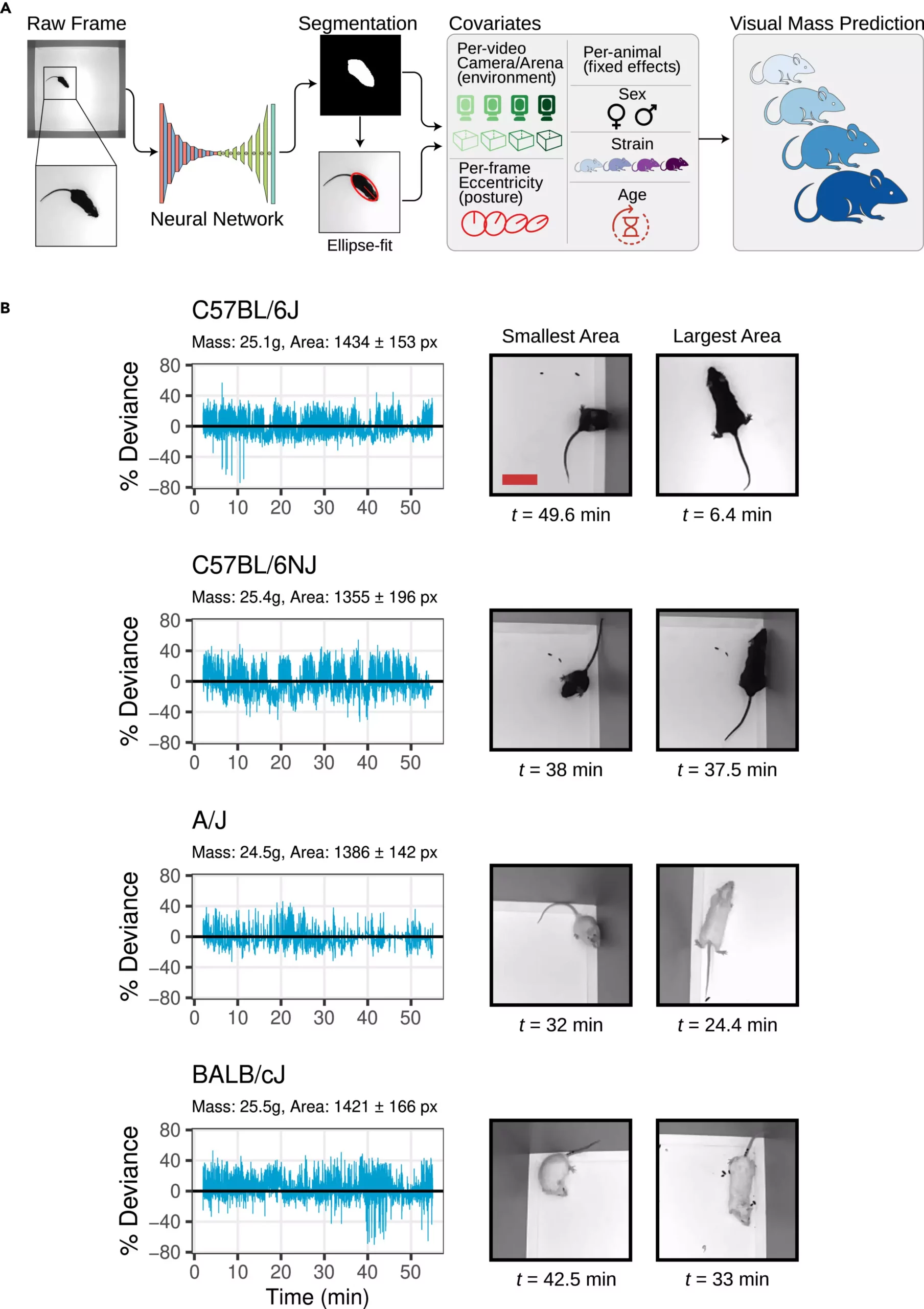In the realm of biomedical research, the measurement of body mass is a pivotal metric that can provide crucial insights into an individual’s overall health and potential health issues. This is especially true when working with mice, the most common subjects in preclinical studies. However, the conventional method of measuring body mass involves physically removing the animals from their cages and placing them on a scale, a procedure that can be stressful for the mice and introduce variables that may impact the outcomes of experiments. Furthermore, these measurements are often infrequent, conducted only once every few days, which can compromise the accuracy and reproducibility of results.
Associate Professor Vivek Kumar, Ph.D., and his research team at Jackson Laboratory (JAX) have developed a groundbreaking non-intrusive method that utilizes computer vision technology to accurately and continuously monitor mouse body mass. This pioneering approach aims to alleviate the stress associated with traditional weighing techniques while enhancing the quality and reliability of biomedical research involving mice. By analyzing a vast dataset of mouse videos, the team devised a method that can calculate body mass with less than 5% error, representing a significant advancement in the field.
Developing this innovative method posed several challenges for the research team. Unlike static subjects commonly used in industrial farming for body mass measurement, mice are dynamic and agile creatures that frequently change posture and shape, resembling deformable objects. Additionally, the team worked with 62 distinct mouse strains, each with unique characteristics, requiring the utilization of multiple visual metrics, machine learning tools, and statistical modeling to achieve accurate results. Through meticulous analysis and rigorous testing, the team successfully trained their models to predict body mass reliably across diverse mouse strains, setting a new standard for monitoring animal health.
The novel method introduced by Kumar and his team offers numerous advantages for researchers in the biomedical field. Not only does it enable the detection of subtle changes in body mass over consecutive days, which is crucial for studies involving drug interventions or genetic manipulations, but it also has the potential to serve as a diagnostic tool for general health monitoring. Furthermore, the versatility of this approach allows for adaptation to various experimental settings and different organisms, opening up new possibilities for advancing research in diverse areas.
The development of a non-intrusive method for monitoring mouse body mass represents a significant milestone in biomedical research. By harnessing the power of computer vision technology, researchers can now accurately and continuously track changes in body mass, leading to more reliable and reproducible results in preclinical studies. As this innovative approach continues to evolve and expand its applications, it holds the promise of revolutionizing how we approach biomedical research and enhancing our understanding of health and disease.


Leave a Reply